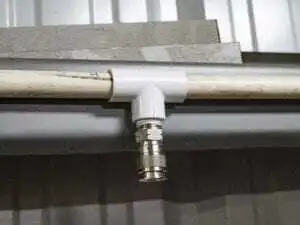Jul . 28, 2024 08:14 Back to list
Exploring Innovative Solutions for Submersible Column Pipe Applications and Their Benefits in Various Industries
Submersible Column Pipe Products An Overview
Submersible column pipes are crucial components in water extraction systems, particularly in applications where groundwater needs to be drawn from deep wells or aquifers. These pipes serve as the conduit through which water is pumped to the surface, operating effectively in various industrial, agricultural, and municipal applications. The importance of selecting the right submersible column pipe cannot be overstated, as it directly contributes to the efficiency and longevity of water wells.
Construction and Materials
Submersible column pipes are typically made from durable materials capable of withstanding the harsh conditions found underwater. Common materials include stainless steel, PVC, and fiberglass. Stainless steel is particularly favored for its strength and corrosion resistance, making it suitable for environments where the pipes are exposed to various chemicals and saline conditions. PVC is a lighter and more cost-effective alternative that is easy to handle and install, although it may not offer the same level of durability as stainless steel in demanding situations. Fiberglass pipes combine the benefits of lightweight handling with resistance to corrosion, making them an ideal choice for certain water quality conditions.
Design and Functionality
The design of submersible column pipes is generally cylindrical, allowing for optimal flow rates and minimizing turbulence within the system. These pipes are often connected to submersible pumps, which are designed to operate in an underwater environment, delivering water efficiently to the surface. The pipes' diameter and length must be selected based on the specific requirements of the water source, as well as the volume and pressure of the water to be transported.
Moreover, the installation features of submersible column pipes allow for easy assembly and maintenance. Most systems incorporate threaded joints or couplings, providing a secure connection that helps prevent leaks. Some models include integrated anti-turbulence features to enhance water flow, which improves the overall pump efficiency.
submersible column pipe products

Applications
Submersible column pipes have versatile applications across multiple sectors. In agriculture, they are essential for irrigation systems, enabling farmers to access groundwater effectively and sustain crop production, especially in arid regions. In the industrial sector, these pipes are used in cooling systems and mining operations where large volumes of water are required. Municipal systems also rely on submersible column pipes for delivering drinking water to communities and facilitating wastewater management.
Benefits
The benefits of submersible column pipe products are manifold. Firstly, they enhance the efficiency of water pumping systems, enabling significant energy savings and lower operational costs for users. Secondly, their robust construction ensures long-term durability, reducing the need for frequent replacements and maintenance. Finally, these pipes contribute to cleaner water extraction methods, as their design minimizes the risk of contamination during the pumping process.
Conclusion
In conclusion, submersible column pipe products play a pivotal role in modern water management systems. Their robust construction, versatile applications, and efficient design make them indispensable in various fields ranging from agriculture to municipal water supply. As water scarcity continues to be a global challenge, the importance of high-quality submersible column pipes will only grow, driving further innovation and development in this essential industry. Making informed choices about these products can lead to more sustainable water extraction practices, ensuring that this vital resource is available for generations to come.
-
Durable DN100 PVC Well Casing Pipes for Reliable Water Supply
NewsAug.16,2025
-
HORON 25mm PPR Plumbing Pipes: Durable, Leak-Proof Water Systems
NewsAug.15,2025
-
Durable UPVC Column Pipes for Submersible Pumps | Efficient Water Flow
NewsAug.14,2025
-
DN100 PVC Well Casing Pipes - Durable & Corrosion-Resistant
NewsAug.13,2025
-
Flexible 32mm HDPE Pipes in Coil | Durable Water & Gas Lines
NewsAug.12,2025
-
DN50 HDPE Pipes in Coils: Flexible, Durable & Easy Install
NewsAug.11,2025

